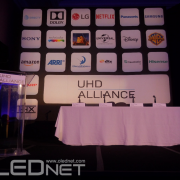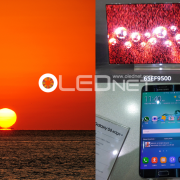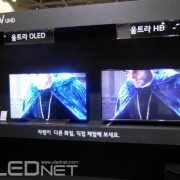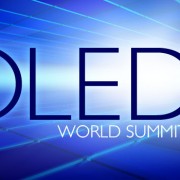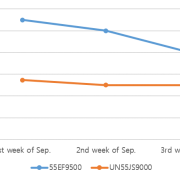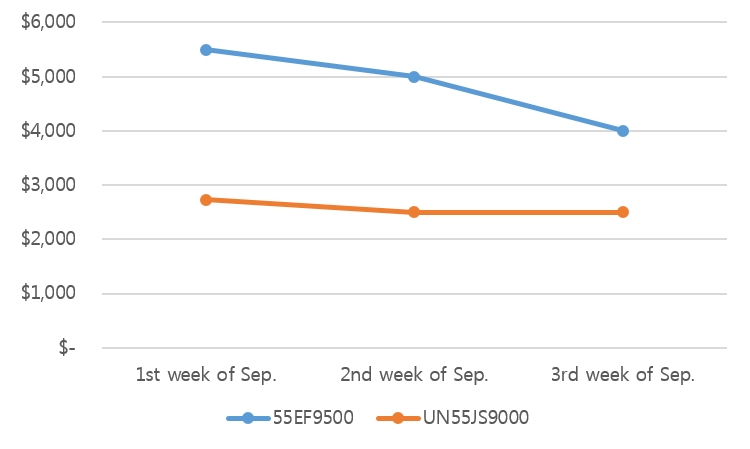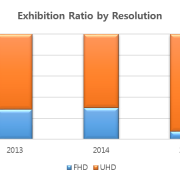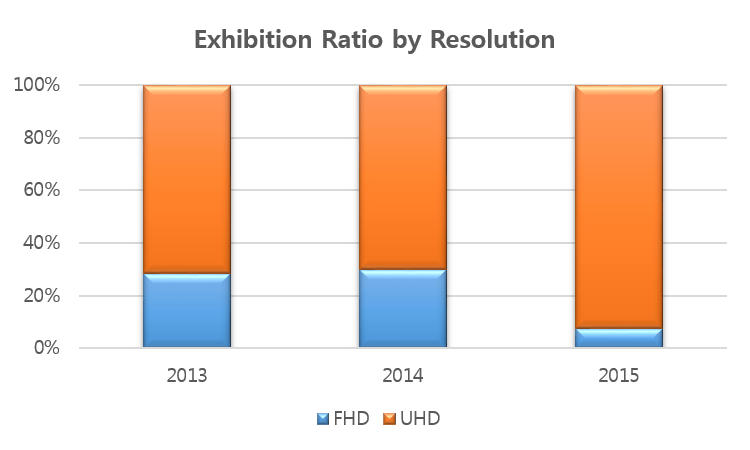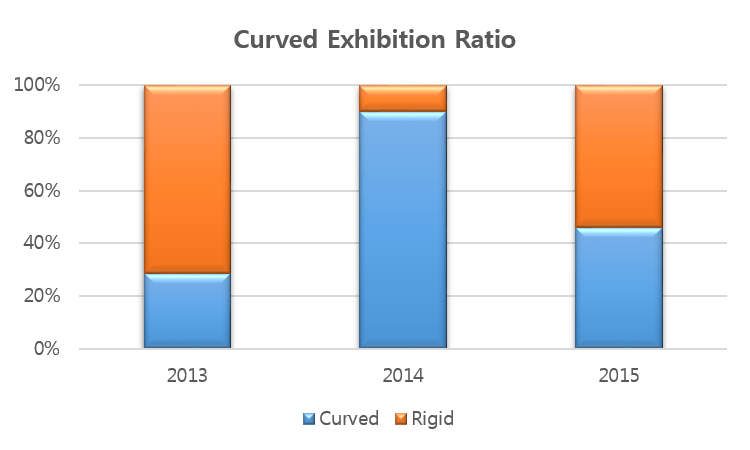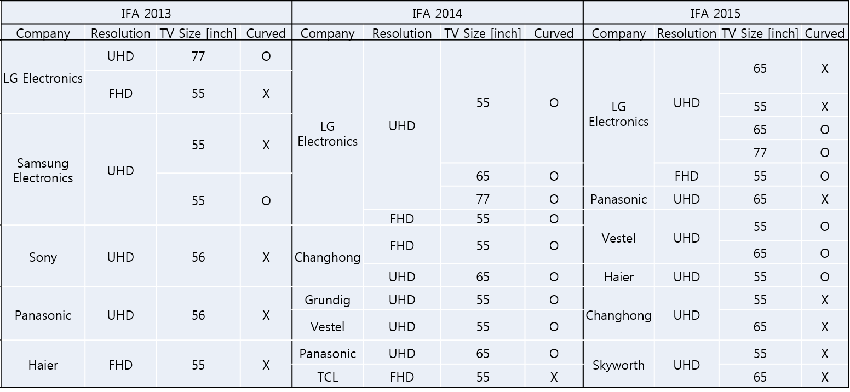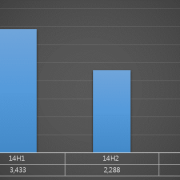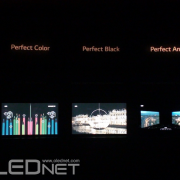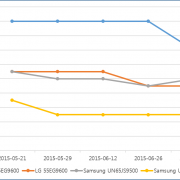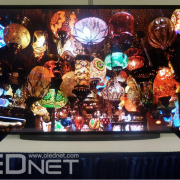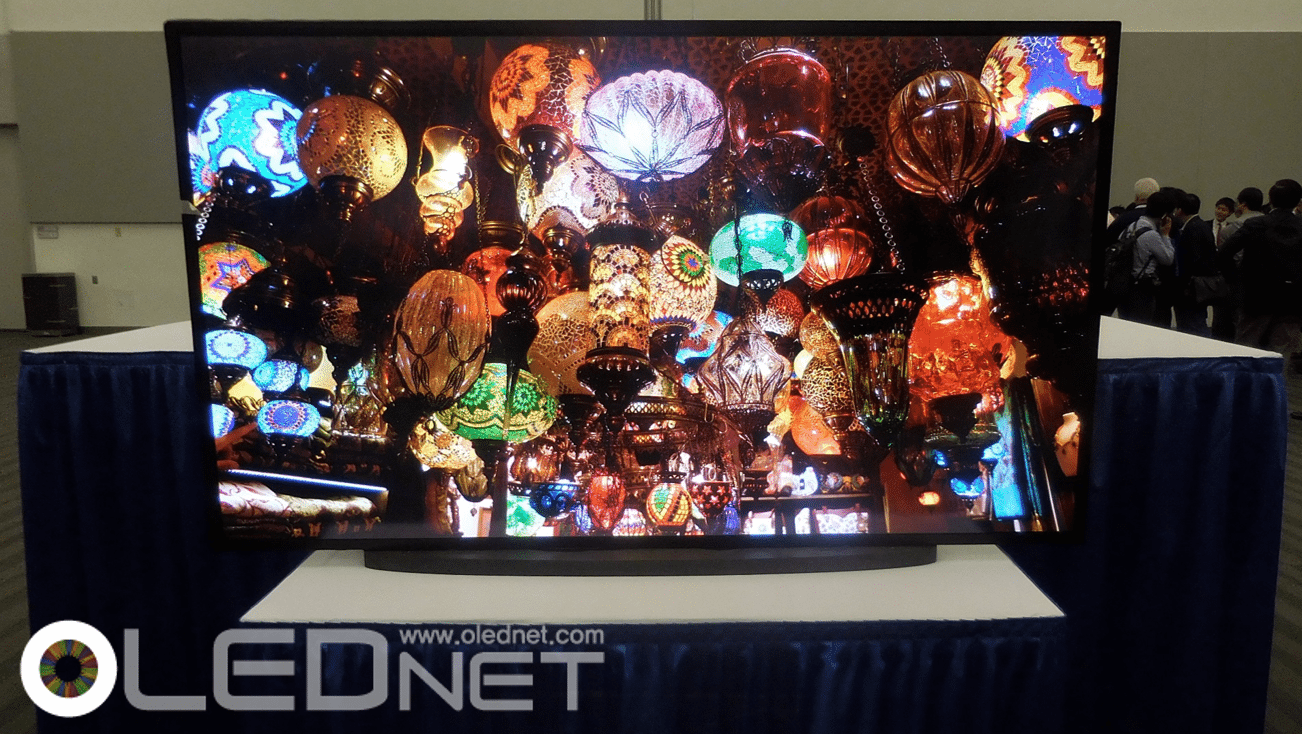[CES 2016] OLED TV Passes UHD Alliance Standards

As a press event of CES 2016 (January 6-9), UHD Alliance, which was created by TV manufacturing companies, contents companies such as film studios, and picture and sound quality related companies to energize the declining TV market, gave a presentation on future UHD TV market and UHD Alliance activities.
The TV market recorded approximately 230 million units in 2015. However, this is 20 million units fewer than 2014’s 250 million, and CES reported that 2016 performance will be similar to 2015. 2016’s estimated UHD TV market, which is the premium market of 55 inch or larger, is 21% of the total TV market with approximately 48 million units.
The 4 key factors that UHD Alliance is pursuing in UHD TV are image resolution, color bit depth, color palate, and high dynamic range.
LCD TV and OLED TV that satisfy these factors are to be available from this year. In order to respond to OLED’s vivid color realization, LCD TV companies developed quantum technology. Also to draw near OLED’s contrast ratio of 1,000,000:1 they are continuing technology development, but the LCD contrast ratio remains around 3,000:1.
It is worth noting that UHD Alliance provided 2 HDR specs: more than 1,000 nits peak brightness at less than 0.05 nits black level, or 540 nits brightness with 0.0005 black level.
LG Electronics already achieved UHD Alliance’s HDR spec of 540 nit peak brightness last year, and this is analyzed to provide foundation for more invigorated future OLED TV market. Based on this, OLED TV is expected to be the main force within the UHD TV market.
Additionally, UBI Research estimated that 2016 OLED TV market will record 1,200,000 units.


